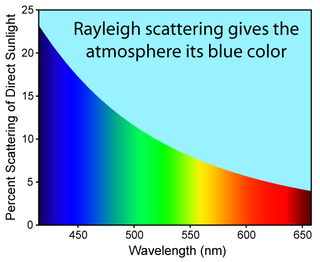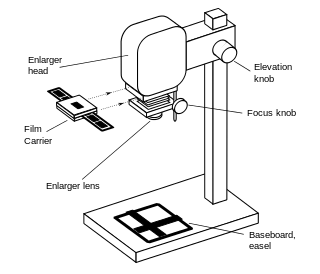Drag or The Drag may refer to:
Stereo, or stereophonic sound, is the reproduction of sound using two or more independent audio channels.
Color or colour is the visual perceptual property corresponding in humans to the categories called red, yellow, blue, green, etc.

Diffuse sky radiation is solar radiation reaching the Earth's surface after having been scattered from the direct solar beam by molecules or particulates in the atmosphere. It is also called sky radiation, the determinative process for changing the colors of the sky. Approximately 23% of direct incident radiation of total sunlight is removed from the direct solar beam by scattering into the atmosphere; of this amount about two-thirds ultimately reaches the earth as photon diffused skylight radiation.

Alexandre-Edmond Becquerel, known as Edmond Becquerel, was a French physicist who studied the solar spectrum, magnetism, electricity and optics. He is credited with the discovery of the photovoltaic effect, the operating principle of the solar cell, in 1839. He is also known for his work in luminescence and phosphorescence. He was the son of Antoine César Becquerel and the father of Henri Becquerel, one of the discoverers of radioactivity.
HALO, halo, halos or haloes may refer to:

An enlarger is a specialized transparency projector used to produce photographic prints from film or glass negatives, or from transparencies.

The Sabatier effect, also known as pseudo-solarization and erroneously referred to as the Sabattier effect, is a phenomenon in photography in which the image recorded on a negative or on a photographic print is wholly or partially reversed in tone. Dark areas appear light or light areas appear dark. Solarization and pseudo-solarization are quite distinct effects. Over time, the "pseudo" has been dropped in many photographic darkroom circles and discussions, but the effect that is meant is the Sabattier effect and not the solarization by extreme overexposure.
Momentum, or linear momentum, is a vector quantity in physics.
Slow Motion may refer to:
Sabatier or Sabattier can refer to:
Technicolor is a color film process. Technicolour (BrE) or Technicolor (AmE) may also refer to:

Image editing encompasses the processes of altering images, whether they are digital photographs, traditional photo-chemical photographs, or illustrations. Traditional analog image editing is known as photo retouching, using tools such as an airbrush to modify photographs or editing illustrations with any traditional art medium. Graphic software programs, which can be broadly grouped into vector graphics editors, raster graphics editors, and 3D modelers, are the primary tools with which a user may manipulate, enhance, and transform images. Many image editing programs are also used to render or create computer art from scratch. The term "image editing" usually refers only to the editing of 2D images, not 3D ones.

In photography, solarization is the effect of tone reversal observed in cases of extreme overexposure of the photographic film in the camera. Most likely, the effect was first observed in scenery photographs including the sun. The sun, instead of being the whitest spot in the image, turned black or grey. For instance, Minor White's photograph of a winter scene, The Black Sun 1955, was a result of the shutter of his camera freezing in the open position, producing severe overexposure. Ansel Adams had also earlier created a solarized sun image, titled Black Sun, Owens Valley, California, 1939, by overexposure.
This page is based on this
Wikipedia article Text is available under the
CC BY-SA 4.0 license; additional terms may apply.
Images, videos and audio are available under their respective licenses.





